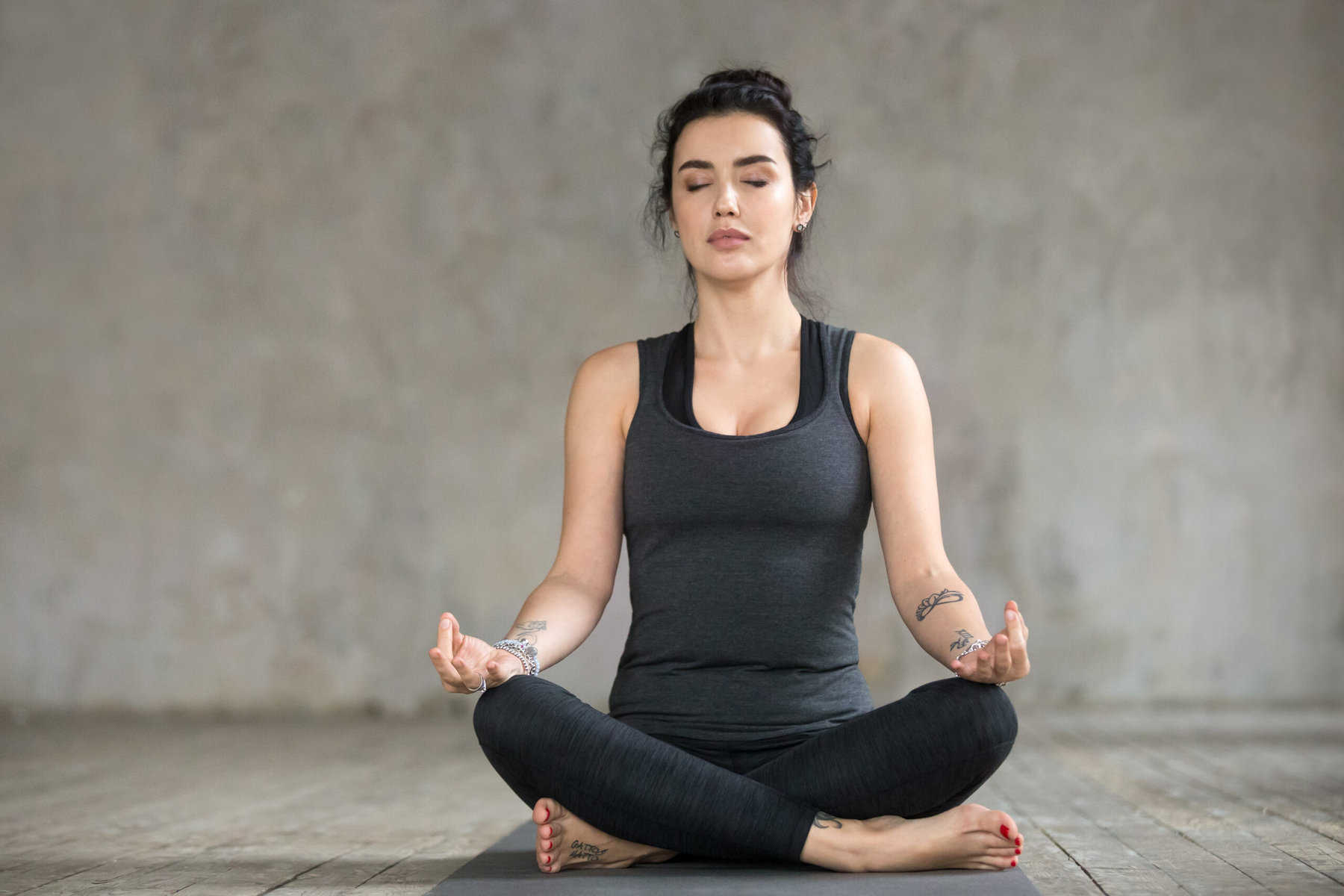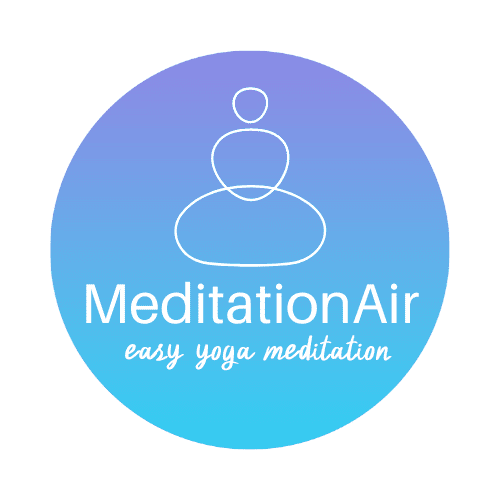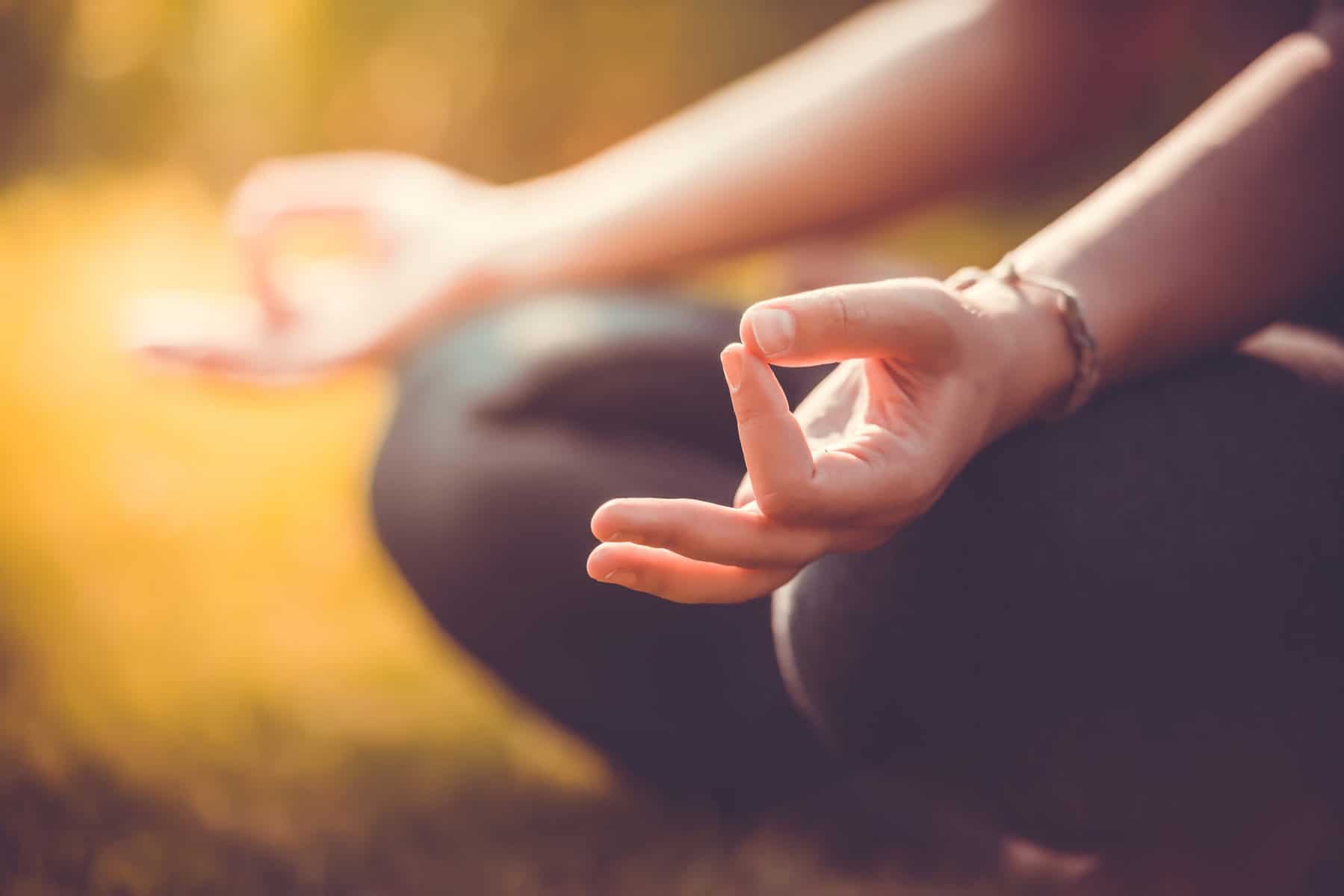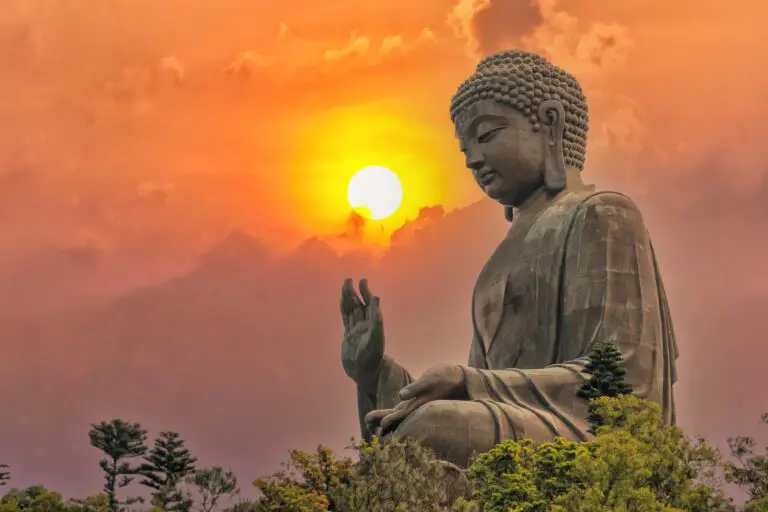Top tips from your beginner’s guide on how to do yoga meditation:
- Start with 5-minute meditations done consistently
- Experiment to find your favorite seated position
- Work first on stilling the body and learning to concentrate
If you’re a yogi, meditation sounds like a familiar term. You have likely done some short meditations in class. But diving deep into how to do yoga meditation, especially when you’re just starting out, can feel like uncharted waters.
If you’re ready to explore yoga meditation further, this guide’s for you.
Meditation has always been yoga’s powerful partner. In traditional yoga philosophy, as described in Patanjali’s Yoga Sutras, the purpose of practicing yoga is to prepare the body for meditation.
While yoga focuses on the physical postures and breath control, meditation takes us deeper into the mind and spirit. This is where the idea of yoga meditation for beginners comes out. It provides a space for stillness and introspection, and allows you to calm the chattering mind, reduce stress, and seek some detachment from negative emotions.
Starting yoga meditation when you’re a beginner can feel strange. Just keep in mind it’s a journey. So whether you’re looking to find inner peace, reduce anxiety, or simply enhance your yoga practice, adding some meditation to your life is a transformative experience.
A Little Background on the Purpose of Yoga Meditation
Want to know the origins of how to do yoga meditation? Start with the Yoga Sutras. They provide valuable insights into the purpose and practice of yoga meditation.
According to this ancient text, meditation is seen as a way to “still the fluctuations of the mind” (translation: master your monkey mind) and attain a state of inner peace and self-realization. It’s all about harnessing your mental strength, controlling restless thoughts, becoming able to ignore distractions, and getting to a state of profound concentration.
It’s clear from Patanjali that meditation is the essence of yoga, transcending the physical part of yoga.
The Best Time to Do Yoga Meditation
Just after practicing yoga is the ideal time to meditate. After a yoga session, your body’s relaxed and in a perfect state for meditation. Yoga asanas help release tension and create a stable and comfortable seat, while pranayama (breath control practiced during yoga) calms the mind and regulates the breath. This physical and mental preparation sets the stage for a deeper and more focused yoga meditation. For beginners, this will be the easiest time.
Some yogis like to start their day with meditation, as it sets a positive and peaceful tone for the rest of the day. I try to do this and honestly notice that my days just seem to go better when I’ve been able to get in that morning meditation session.
Others find that practicing in the evening helps them unwind and relax before bed. Ultimately, the best time to do yoga meditation when you’re a beginner is whenever you can!
Source: NEULAND YOGA
How to Sit for Yoga Meditation
The foundation of a good meditation is your sitting posture – and everyone finds their favorite one. Depending on your height, flexibility of your joints, and lots of other things, some postures will feel great while others will feel like torture.
What matters is that you are able to maintain a still and relaxed body during meditation, while also remaining alert and focused. That means an upright spine, relaxed shoulders, long neck and hips firmly grounded.

Sukhasana (cross-legged pose)
Here’s how you should set yourself up:
- Cross-Legged Pose (Sukhasana): This is a classic sitting position for meditation. Sit on a blanket, pillow, or meditation cushion to elevate your hips and create a stable base. Cross your legs comfortably in front of you, with one foot in front of the other. Keep your spine straight, shoulders relaxed, and hands resting on your knees or in a mudra (hand position) of your choice. This position promotes grounding and stability.
- Seated on a Chair: Great if you have tight hips or knees. Choose a chair without armrests and sit with your feet flat on the ground. Keep your spine straight, shoulders relaxed, and hands resting on your thighs or in a mudra.
- Half-Lotus Pose (Ardha Padmasana): If you have more flexibility in your hips, you can try this pose. Start by sitting on a cushion or blanket, and then place one foot on top of the opposite thigh, with the sole of the foot facing upward. The other leg can be crossed in front or tucked underneath. Maintain an upright posture and relax your hands on your knees or in a mudra. See video above for how to get into this pose.
Dress comfortably to help avoid some of the distraction. Think of clothing that allows your body to breathe, yet keeps you from feeling chilly or too warm.
How Long Should You Do Yoga Meditation?
Aim for 5 minutes starting out. Trust me, it will feel like a long time if you’re new to the practice. As you get the hang of it, extend your sessions gradually to 10, 15, 20 minutes or longer. Usually this lengthening of the practice comes naturally.
It’s better to do shorter sessions consistently than 1 long session once in a while. Working up to a daily habit is ideal, and if you stick to 5 minutes, it should also be do-able on all but the craziest days.
The 3 Stages of Yoga Meditation
Yoga meditation actually takes place in 3 stages:
Stage 1: Stilling the body
Stage 2: Concentrating the mind
Stage 3: Truly meditating
Mastering stillness is challenging because, if you’re like me, you tend to twitch and move a bit when sitting “still.” These body movements prevent you from concentrating. So, you first have to master the skill of coming to complete physical stillness. Eventually, with practice, you’ll be able to settle down quickly.
After that, you can move on to concentration. Mastering concentration is the hardest stage. Thoughts are super hard to control. Just like any other skill, it takes time and practice to get on top of them. But you’ll get there!
Luckily, meditation comes easier once you are still and concentrated.
Remember, the goal is not to achieve perfection right away, but rather to cultivate a regular meditation practice that works for you. It’s a journey of self-discovery that unfolds at its own pace.
As you continue to practice, you may find that you naturally want to extend your meditation sessions – which is great!
The 3 Steps of Easy Yoga Meditation for Beginners
Logically, yoga meditation involves a series of steps that help to move through the 3 stages I mentioned above: calming the body, cultivating concentration, and entering a state of inner awareness.
Here I’ll lay out the steps for how to do yoga meditation, nice and easy…exactly how beginners should start.
Step 1. Take a comfortable meditation position and settle down
Find a quiet and peaceful space where you can sit comfortably in your preferred sitting pose. Close your eyes and take a few deep breaths to settle your mind and body. Tell yourself that you will remain perfectly still during your meditation today.
A true yoga meditation session starts with chanting OM 3 times. If this feels weird, skip it – or chant it in your mind.
Step 2. Do breathing exercises through the nose only
Once you are settled, bring your attention to your breath. Take slow, deep breaths in and out through your nose. Notice the sensation of the breath as it enters and leaves your body. Do this for 6 to 10 rounds. Then allow your breath to come back to its natural rhythm.
We are accustomed to shallow-breathing most of the day, so this deep breathing can feel amazingly relaxing.
Step 3. Focusing on one thought, sound, or symbol from nature
As you continue to breathe, choose a single point of focus for your meditation. This could be a word or phrase, a sound, or a visual symbol from nature, such as a flower, river, or tree. Whenever your mind starts to wander, gently bring your attention back to your chosen point of focus.
Meditation isn’t just an act; it’s a journey. With the foundation of yoga beneath you, you’ll find that learning how to do yoga meditation feels like opening a window to a calmer, clearer world. Your mindfulness will improve, your connection with yourself will deepen – and your yoga practice will feel even stronger.


